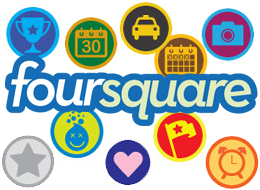The Other Verizon vs. AT&T War
As bad as it sounds, who didn’t get excited seeing a schoolyard fight break out during recess? The rush of the crowd, the disruption from the norm, and the stories that would be shared long after the dust had settled. This is how I feel about the upcoming bout between AT&T and Verizon over the iPhone. Of course, this won’t be the first time the telecom titans have had a pissing contest to mark their territory.
In October 2009, Verizon launched its infamous “Maps” campaign, taking aim at AT&T’s lack of 3G coverage. This message especially hit home with iPhone users in major metropolitan areas, who notoriously experienced bad reception. Even worse, the campaign bent the truth by fostering the idea that AT&T’s coverage was worse than it actually was. Though the maps only reflect 3G coverage, not 2G, not everyone caught this note during the course of the 30 second commercials, or in the extra fine print.
Of course, AT&T didn’t take this fight lying down. After losing a court battle against Verizon, the company decided to take the high road. The high society snobbish road of being “dismissive, but friendly.” Research showed this attitude was the best way to reach their middle American target who felt slighted by the “truth” presented in Verizon’s commercials. They chose Luke Wilson, an actor they felt would resonate with this audience, to deliver this message. Within a five week period they prepared a multimedia assault that treated Verizon’s campaign as nothing more than a trifle, then changed the conversation to discuss things that AT&T actually does well, such as speed and being able to use data and voice at the same time.
By April of 2010, not only had AT&T managed to reclaim their market share, but actually grow it. Verizon stopped their “Maps” campaign, and AT&T, coming out of the frey the victor, stopped their campaign as well. Looking back at their last major battle, I have to wonder how this will affect their upcoming match.
Has Verizon learned any new tactics to use against their competitor? The first ad from Verizon shows the company thanking customers for being patient, touting a message of appreciation and service. Though this isn't a direct shot at their competitor, AT&T isn't known for having the best customer service. Is this how they will play the game?
After scoring big with middle America, will AT&T have the same luck with a metropolitan audience that complained the most about their lack of coverage? The company has yet to reveal an inkling of any battle plans besides a lower priced iPhone 3GS, and a bunch of fees for any of their customers who think about jumping ship.
Though it would be unfair to crown anyone the winner before the match has even begun, I will predict that the upcoming iPhone War will be a victory for marketers, serving as a great case study to learn from for years to come.
Nurturing Innovation
Some see innovation as a hat trick, or a gift from the Muses to we lowly mortals. It appears out of thin air without warning, pushing the envelope of the expected and common place. Of course, the truth is far less spacey and ethereal; but no less magical.
Innovation does not spring wildly from the minds of genius, but takes time and cultivation. A 3 hour brainstorming session or weekend treat isn't going to cut it. In a fast paced, results driven culture this may seem like blasphemy, but there are no shortcuts to innovation.
Companies such as Virgin, AT&T, and General Motors have recognized this fact, which is part of the reason they have been household names for so long. A great example is 3M, sighted as a pioneer in intraprenuership and autonomy by Dan Pink in his book, Drive. Their president and chairman, William McKnight, gave employees the option of spending 15 percent of their time on any project they wished way back in the dark ages of the 1930s and 40s. As crazy as this sounds, especially for that era, what McKnight was doing was planting seeds of innovation that 3M is still reaping the benefits of today.
Another company you may have heard of, Google, has adopted a similar culture. Instead of 15 percent, they give their employees 20 percent of their time to work on any project of their choosing; now 50 percent of their new offerings come from this measure. This has led to the creation of such products as Gmail, Google News, and Adsense.
The thing these companies understand is that you can’t expect things to grow up overnight like Jack and the Beanstalk. It takes seeding, watering, fertilizer, trimming, and of course, the proper soil in which to grow. Once you develop this culture and give ideas time to grow, you will unlock the true magic of innovation.
Forging Your Voice
A person's signature style, the way they walk, talk, and even write, is a key aspect of their identity. That said, it is ironic that we often define ourselves by imitating what we find best in others.
In The Elements of Style by Strunk and White, their second rule of writing advises readers to write in a way that comes easily and naturally. The rule also makes a point to say that much of our writing comes from adopting the styles of people we admire. It is almost impossible to avoid this habit. In fact, we shouldn't, but let things flow, influences and all.
But, only if we are willing to follow rule #5: revise and rewrite.
Though it is best to write in a voice that comes naturally, we must still take the time to properly edit our work. It is only through revising and honing one's words that writing evolves from stream of consciousness to enjoyable prose.
When we do this, we respect our readers, our craft, and ourselves. It is on the tedious road to revision that we forge our voice. It is where we find the magic of writing. It is along this winding path that we define ourselves, leaving our signature on the hearts and minds of our audience.
Does Your Audience Really Want Another Merit Badge?
In elementary school, gold stars were everything! It was a competition with our classmates. It made something boring and monotonous more interesting and engaging. As each star got harder and harder to achieve, the value of those cheap Avery labels grew and grew. Little did we realize we were under the spell of game mechanics.
Game mechanics are a set of tools and systems designed to make an experience more engaging, sticky, and viral, incentivizing certain behaviors.
Demand for game mechanics has grown since the introduction of Foursquare. People became mayors of their favorite haunts, got free cheese fries, and even a spiffy virtual badge to show off to their friends on Facebook and Twitter. Local shops got repeat business for their trouble.
Now everyone wants in.
Unfortunately, not everyone that knows how to make a good website knows how to make a good game. Web designers are used to creating simple interactive experiences that get users from point A to point B as quick and easy as possible. Game development is about extended engagement through emotional connection, intensity, difficulty, goals, and a narrative. Before game mechanics can be effectively used, web designers are going to have to brush up a bit on their game development skills. They can't slap a badge on something and call it a day.
Despite the advent of push button game mechanics, some designers and companies are venturing into better integrated game development. Mint.com promotes financial health through game play; DevHub which has had success by "gamifying" the process of building websites; and EpicWin uses game play to make chores fun.
As game mechanics continue to improve, we will see less badges and leader boards added to sites without proper integration. Users will be further engaged through increasing difficulty, storytelling, and emotional connection. Web designers will embrace their inner gamer, expanding their skills, and finally earn those coveted gold stars for their achievement in game mechanics.
Being The Board
In the game of life, what role do you play? Are you the pawn, the thimble, or a domino falling to the whims of chance? Or do you consider yourself the dealer, controlling which cards are dealt?
Strangely, no one ever thinks about being the board.
According to The Art of Possibility by Rosamund and Benjamin Zander, when we look at ourselves as the framework upon which events play out, we gain a more conscious, constructive, and objective view. We let go of being the victim and stop playing God. We remove assumptions and look at things as they are instead of as we are.
Say you have a client who keeps shooting down your ideas with flimsy excuses. You feel like the deck is stacked against you and it’s not fair. Now you are looking for someone to blame for not getting your ideas across and getting nowhere. But, if you can get over yourself and be the board, you might see what’s really keeping you from passing go and collecting $200 dollars.
You may realize that your client is ignorant because you didn’t share the rules of the game. You failed to fully enroll them in your logic, your research, and your understanding of their target market. Since you didn’t share the rules, you can’t be too mad when they don’t play the game correctly.
Now that you’ve come to a better conclusion of events, you can take responsibility for what needs to be done. You can share your logic with the client and get him on board, not only selling your ideas, but repairing the relationship.
Being the board and accepting responsibility is not about blame. It is about finding solutions that are constructive. It’s less shoulda, coulda, woulda, and more about moving forward. It’s saying this is this, so we’re going to do that, and I hope you’ll come along with me.
Augmented Reality Check: What really counts as added value?
In an effort to add value to their products and services, many companies have started to embrace augmented reality (AR). The technology is expected to generate $350 million dollars for businesses by 2014. However, not every application of the technology lives up to this promise. Here, we'll examine what it takes to actually add value to a product using AR, and what is just a gimmick.
Our first example is a cookie with an AR code baked in. The cookie is not a new product, but is a good example of what most companies are doing with the technology.
Demo of Augmented Reality Cookies from Tellart on Vimeo.
So what's the added value? It does very little to actually entice me, and feels like a waste of time. Though a creative use of 3D technology, it unfortunately still falls flat.
Our other example was developed by AKQA for the US Postal Service to help people see which box will fit their shipping needs.
This application is not flashy. However, it is a memorable and innovative use of AR technology. It provides users with an engaging experience that is practical and useful, generating repeat visits, and most importantly, repeat business.
In order for companies to succeed using AR, or any other technology to add value to their products, the use of the technology must be truly innovative. It must be practical to the product, and engaging to the consumer. If not, the company risks being eaten up by the competition.

